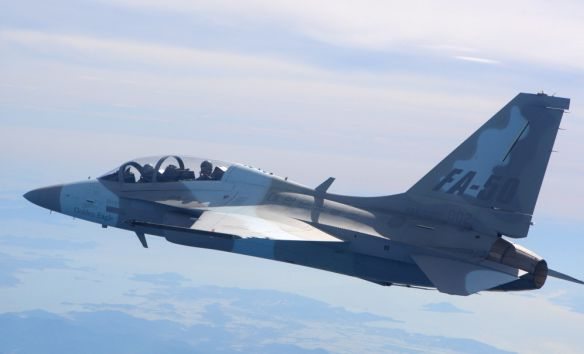Korea Aerospace Industries Ltd., South Korea’s sole aircraft manufacturer, said Friday that it has made the first delivery of its multi-mission jets to the Philippines, further solidifying its status as an aircraft exporter.
The two FA-50PH took off from Sacheon, 437 kilometers south of Seoul, to make the 2,482 kilometer “ferry flight” to the Philippines. The pair are expected to arrive at Clark Air Base on Saturday, KAI said.
The ferry flight involves the planes being directly flown to their destination and could involve making stops to refuel.
KAI said such delivery methods require careful planning because it has to take into consideration weather conditions and transit through airspace regulated by other countries.
The two planes are part of a $420 million government-to-government deal inked between Seoul and Manila that calls for the export of 12 FA-50PHs.
The two-seat supersonic jets are variants of the FA-50 light attack fighters in service with the South Korean Air Force. The planes that are derived from the T-50 advanced trainer can be armed with air-to-air heat seeking missiles, bombs and rockets, and have an automatic cannon.
KAI said that the first transfer adheres to pre-arranged delivery scheduled with the remaining 10 aircraft to be delivered by 2017. The 12 FA-50PHs will be the first supersonic jets used by the Philippines Air Force since they retired their fleet of F-5s.
“Meeting the delivery time will enhance the trust and confidence of customers,” the aerospace company said. KAI was able to meet the delivery schedule when it sold 16 T-16 jets to Indonesia.
The company then said it is working to meet the delivery schedules for orders secured from Iraq and Thailand.
KAI has so far received 133 plane orders from Indonesia, Turkey, Peru, Iraq and Thailand for both the T-50 series jets and the KT-1 tandem, prop-driven basic trainers. These orders are worth some $3.3 billion.
The company said it is negotiating with Peru and Botswana to sell the T-50 jets, as well as seeking new customers in Europe, Asia, Africa and Latin America for the KT-1.










